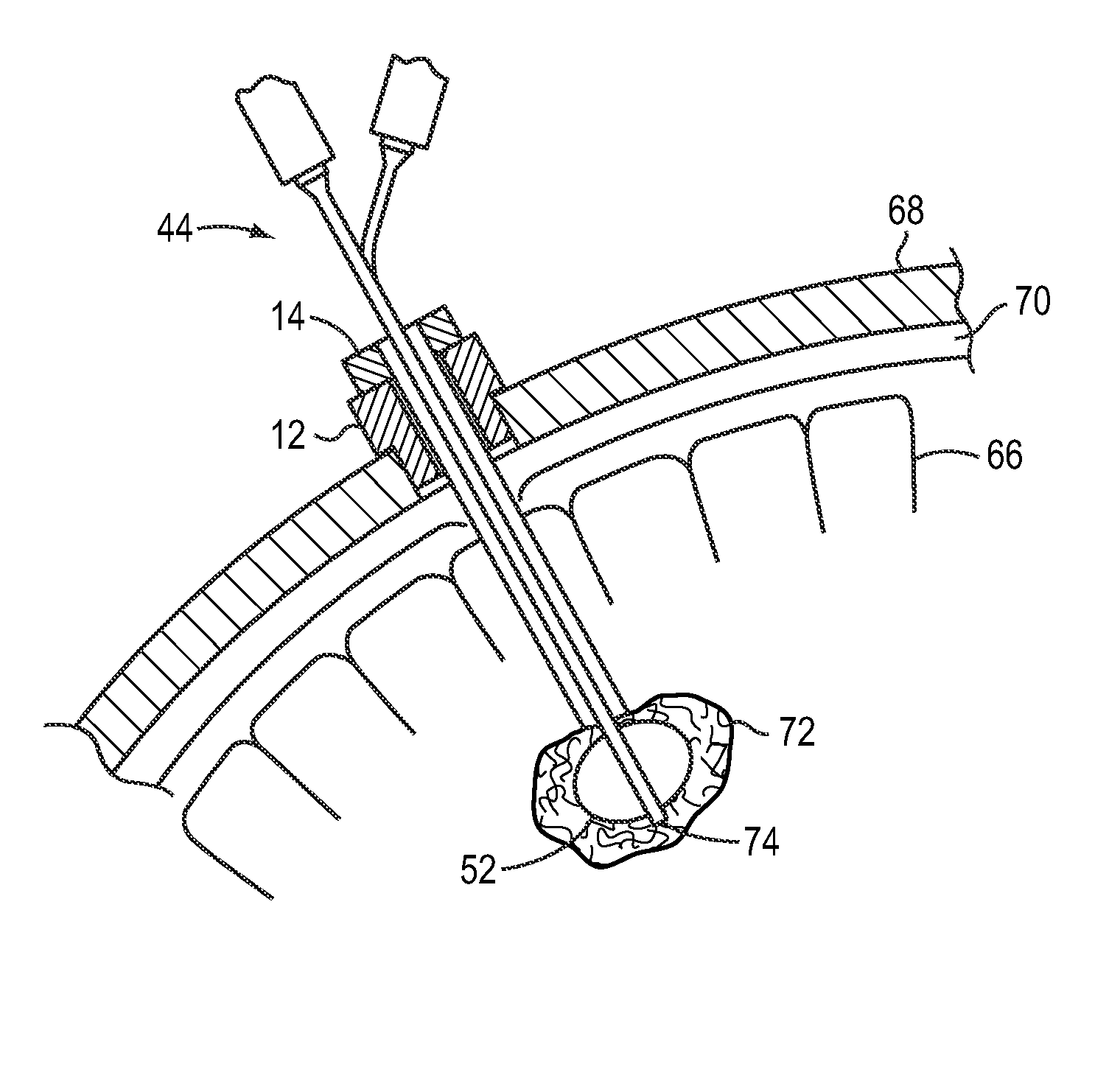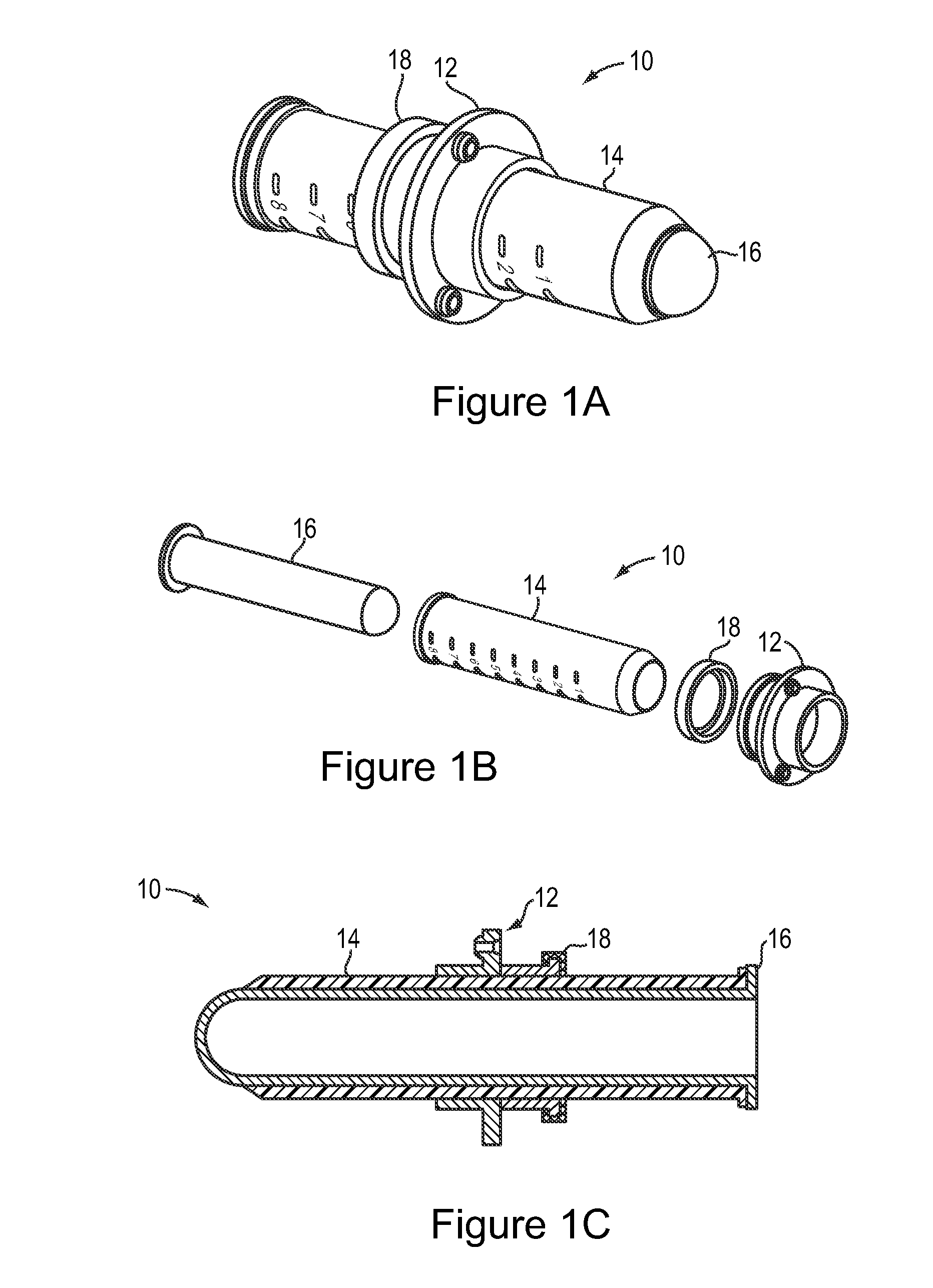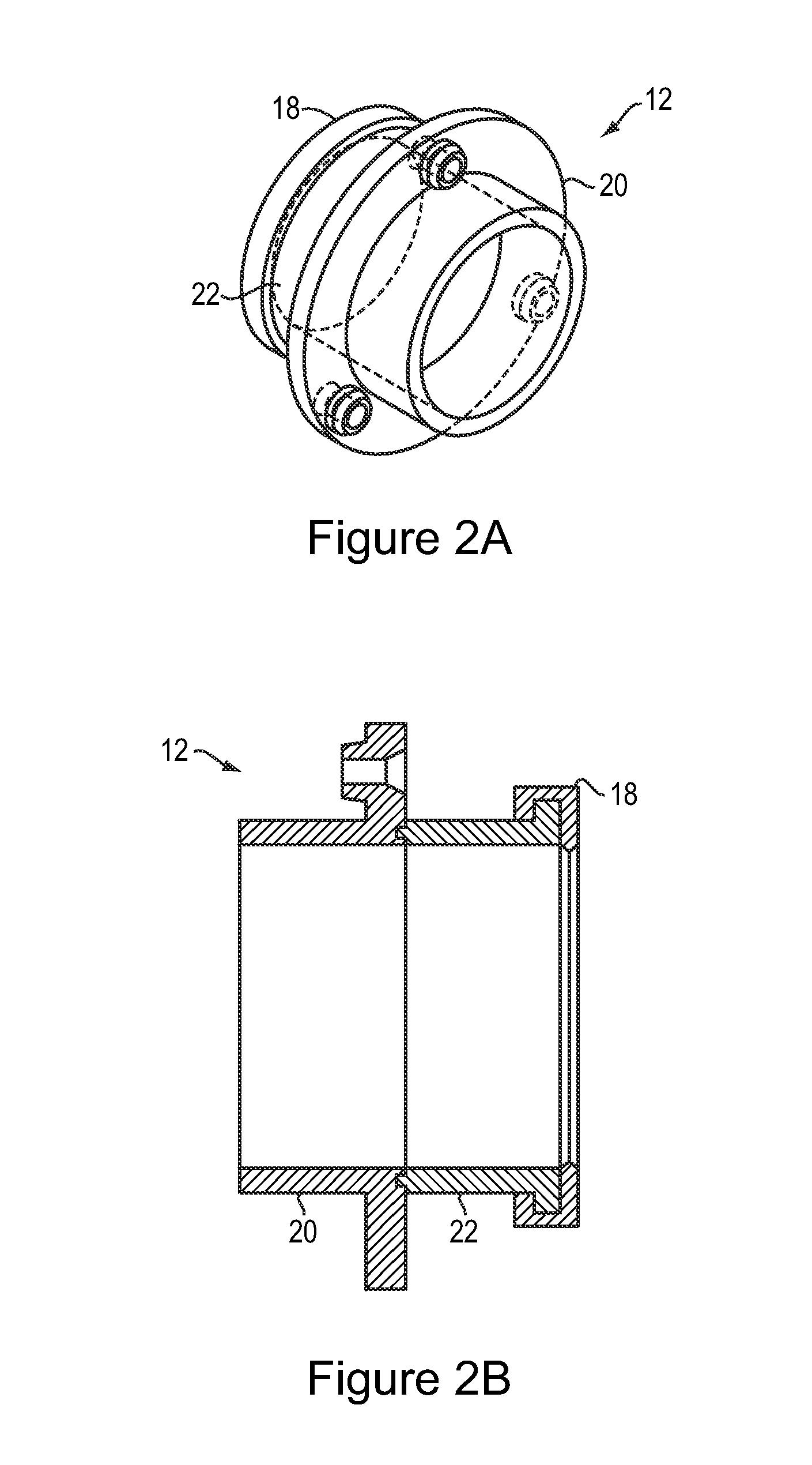Cranial evacuation system and use thereof
a technology of cranial evacuation and cranial nerve, which is applied in the field of cranial evacuation system, can solve the problems of difficult to maintain visual and physical contact of solid matter in a working cavity, and difficulty in visualizing the cavity, so as to facilitate brain tissue displacement, stop bleeding, and expose solid matter
- Summary
- Abstract
- Description
- Claims
- Application Information
AI Technical Summary
Benefits of technology
Problems solved by technology
Method used
Image
Examples
Embodiment Construction
[0025]The invention relates to a method and device or system for facilitating the removal of undesirable solid matter from brain tissue, and for controlling intracranial bleeding in the region of the brain tissue once the solid matter has been removed.
[0026]FIGS. 1A-1C depict a device 10 for providing access to the solid matter (for example, tumor tissue, a blood clot, a cyst, a brain lesion or infected brain tissue) disposed within the brain tissue of a subject. The device 10 includes a cranial anchor 12, a channel member 14, and an optional trocar 16. An anchor seal 18 may optionally be provided as part of the anchor 12. The channel member 14 is dimensioned to fit within an anchor passage of the anchor 12 and to receive the trocar 16. A tight fit between the anchor 12 and the channel member 14 reduces the likelihood that channel member 14 will become misaligned from the anchor 12. The anchor seal 18, when present, can also help stabilize the channel member 14 as it passes through ...
PUM
 Login to View More
Login to View More Abstract
Description
Claims
Application Information
 Login to View More
Login to View More - R&D
- Intellectual Property
- Life Sciences
- Materials
- Tech Scout
- Unparalleled Data Quality
- Higher Quality Content
- 60% Fewer Hallucinations
Browse by: Latest US Patents, China's latest patents, Technical Efficacy Thesaurus, Application Domain, Technology Topic, Popular Technical Reports.
© 2025 PatSnap. All rights reserved.Legal|Privacy policy|Modern Slavery Act Transparency Statement|Sitemap|About US| Contact US: help@patsnap.com



